Family
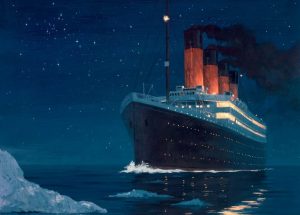
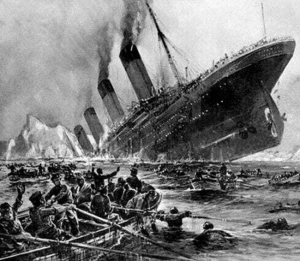 Following the Titanic disaster, a strange kind of job was formed…that of an iceberg mover. This was something I had never heard of, and it seems rather strange. I am aware that icebergs are chucks of ice, and obviously that they float, but to have the job of actually keeping track of an iceberg’s location so that you can go out to move it out of the shipping lanes is a really odd job, if you ask me. Still, the icebergs floating in the oceans, were a serious danger to the ships. Even if other ships were in the area and had seen the icebergs, that doesn’t mean other ships couldn’t fall prey to the icebergs. Many of those ships shut down their radios overnight…the most dangerous time for icebergs.
Following the Titanic disaster, a strange kind of job was formed…that of an iceberg mover. This was something I had never heard of, and it seems rather strange. I am aware that icebergs are chucks of ice, and obviously that they float, but to have the job of actually keeping track of an iceberg’s location so that you can go out to move it out of the shipping lanes is a really odd job, if you ask me. Still, the icebergs floating in the oceans, were a serious danger to the ships. Even if other ships were in the area and had seen the icebergs, that doesn’t mean other ships couldn’t fall prey to the icebergs. Many of those ships shut down their radios overnight…the most dangerous time for icebergs.
The job of the iceberg movers was to keep track of the icebergs and if they moved into the shipping lanes, to go in and move them to a different location. Now, that makes me wonder how heavy the icebergs were, and how hard it would be to move them. I also wonder how dangerous it would be, since icebergs have an uncanny knack for flipping over. Of course, iceberg movers are in a boat. Still, it’s hard to say what things can go wrong when an iceberg flips over. I really don’t think this would be a job I would want.
It seems like they might have had trouble hiring people to do this job, or maybe they just needed a more stable crew of men for the job. Whatever the case may be, The International Ice Patrol (IIP), was founded a year later. The IIP is operated by the US Coast Guard. The IIP tracks the location of icebergs and provides safe routes around them. If an iceberg is in a particularly unsafe area, it might become necessary to move it. Then, the iceberg will be towed out of the area. There is no way that they will be able to stop shipwrecks from 
 happening, but if we can remove the dangers created by icebergs, maybe we will see a few less shipwrecks in the future. Since Titanic, there have been five ship that went down after hitting an iceberg. Lives were lost in the first two following Titanic, but in the last three, everyone was saved. The last one was in 2007.
happening, but if we can remove the dangers created by icebergs, maybe we will see a few less shipwrecks in the future. Since Titanic, there have been five ship that went down after hitting an iceberg. Lives were lost in the first two following Titanic, but in the last three, everyone was saved. The last one was in 2007.
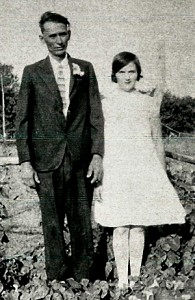
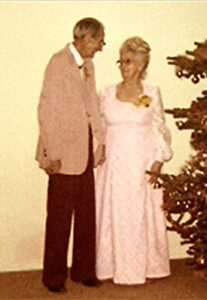 My grandmother, Harriet “Hattie” Byer, was a tiny woman, who loved kids, and had nine of them with my grandfather, George Byer. Grandpa worked hard, and he was a soft-hearted man. I’m sure he spanked his kids, but not very much. Grandma was the disciplinarian of the family, and I’m telling you, she might have been small in stature, but my grandma was a powerhouse!! She had a heart of gold, but she just didn’t take any guff. Don’t get me wrong, my grandparents’ home was filled with love and respect. During chores, there would usually be singing and much laughter. Grandma kept the atmosphere light and happy. My aunts and uncles always knew that they were loved. They also, knew that theirs was not to interfere when Grandma was disciplining one of your siblings. She would quickly turn on the one sassing her while she disciplined their sibling.
My grandmother, Harriet “Hattie” Byer, was a tiny woman, who loved kids, and had nine of them with my grandfather, George Byer. Grandpa worked hard, and he was a soft-hearted man. I’m sure he spanked his kids, but not very much. Grandma was the disciplinarian of the family, and I’m telling you, she might have been small in stature, but my grandma was a powerhouse!! She had a heart of gold, but she just didn’t take any guff. Don’t get me wrong, my grandparents’ home was filled with love and respect. During chores, there would usually be singing and much laughter. Grandma kept the atmosphere light and happy. My aunts and uncles always knew that they were loved. They also, knew that theirs was not to interfere when Grandma was disciplining one of your siblings. She would quickly turn on the one sassing her while she disciplined their sibling.
Evenings would find the family sitting in the living room mesmerized by whatever story Grandma was reading to them that night. Grandma worked so hard, and sometimes it was hard for her to stay awake while reading the evening’s story. Every time she would doze off, the kids would wake her up with calls to read on. Sometimes she just kept on sleeping, and on those days, Grandpa just had to close the book and tell the kids they would hear more the next night. Grandma worked so hard, and for that night, she needed to sleep, and do no more reading.
Grandma was a beautiful woman. She and Grandpa made beautiful children. Every year, we are amazed at how much the family has grown. My guess would be, that Grandma and Grandpa now have over 600 descendants…and counting. When we hit 200, Grandpa said, “Look what we started, Mommy!” He was surprised then. Just imagine what he would think now. Every time I mention an aunt, uncle, or cousin, people say, “Which one?? You are related to 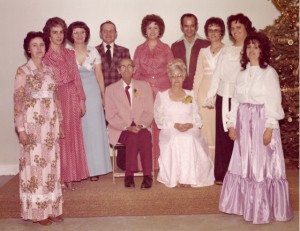
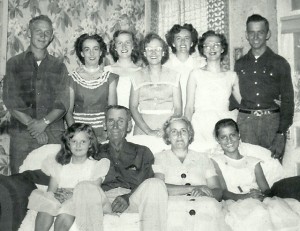 half the town!!” Well…yes, that is very likely true…and I have my sweet grandparents to thank for it all. We are not only a large family…we are a very blessed family. And it all started, when my grandfather saw this beauty of a girl, and never looked back. It was love at first sight. Today is the 115th anniversary of my grandmother’s birth. Happy birthday in Heaven, Grandma Byer. We love and miss you very much.
half the town!!” Well…yes, that is very likely true…and I have my sweet grandparents to thank for it all. We are not only a large family…we are a very blessed family. And it all started, when my grandfather saw this beauty of a girl, and never looked back. It was love at first sight. Today is the 115th anniversary of my grandmother’s birth. Happy birthday in Heaven, Grandma Byer. We love and miss you very much.
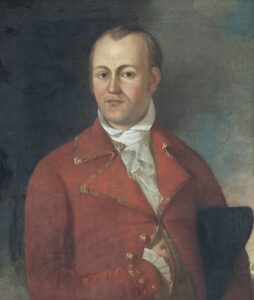
 René-Auguste Chouteau Jr, who was best known as Auguste Chouteau, was the founder of Saint Louis, Missouri. While being a founder of a city is not necessarily such a strange thing, the way in which it came about is not so common. He was the only child of Marie-Thérèse (nee Bourgeois) and René Chouteau, born in either September 7th of either 1749 or 1750. René purportedly abused Marie-Thérèse, and abandoned her and René, so she returned to her pre-matrimonial home. She later remarried. In 1764, when Auguste was still a young man of just 13 years, his stepfather, Pierre Liguest sent him up the Missouri River from Fort Chartres, Illinois. Auguste was the leader of a company of 30 men. His mission was to select a site for a trading post. His stepfather must have considered the young man to be quite intelligent to put him in charge of such an enormous undertaking. Auguste didn’t let his stepfather down either. He chose a place that was not only perfect for the trading post, but would later become a great American city…Saint Louis, Missouri. After his stepfather’s death in 1778, Auguste succeeded him in the business and later formed a partnership with John Jacob Astor. Together they formed the American Fur Company. Auguste was 29 years old.
René-Auguste Chouteau Jr, who was best known as Auguste Chouteau, was the founder of Saint Louis, Missouri. While being a founder of a city is not necessarily such a strange thing, the way in which it came about is not so common. He was the only child of Marie-Thérèse (nee Bourgeois) and René Chouteau, born in either September 7th of either 1749 or 1750. René purportedly abused Marie-Thérèse, and abandoned her and René, so she returned to her pre-matrimonial home. She later remarried. In 1764, when Auguste was still a young man of just 13 years, his stepfather, Pierre Liguest sent him up the Missouri River from Fort Chartres, Illinois. Auguste was the leader of a company of 30 men. His mission was to select a site for a trading post. His stepfather must have considered the young man to be quite intelligent to put him in charge of such an enormous undertaking. Auguste didn’t let his stepfather down either. He chose a place that was not only perfect for the trading post, but would later become a great American city…Saint Louis, Missouri. After his stepfather’s death in 1778, Auguste succeeded him in the business and later formed a partnership with John Jacob Astor. Together they formed the American Fur Company. Auguste was 29 years old.
Chouteau married Marie Therese, the daughter of Jean-Gabriel Cerré, on September 21, 1786, at the Basilica of Saint Louis, King of France, which was a vertical-log church…long since replaced with the current church on the site. The apparently happy marriage united members of the two leading Saint Louis families. They were renowned for their hospitality, which helped strengthen his political position in the city and region. Together they had seven children…Auguste Aristide, Gabriel, Marie Thérèse Eulalie, Henry, Edward, Louise, and Emilie.
Auguste was commissioned colonel of the militia in 1808. His political career began in 1815 when he was appointed one of the commissioners to make treaties with the Indians who had fought on the British side in the War of 1812. The other two commissioners were Ninian Edwards and William Clark. I don’t suppose this would be a big step into politics, but it was an office, and the field of politics seems to take off from a smaller office. 
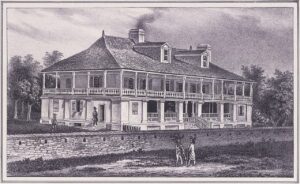 In Saint Louis, he served as Justice of the Peace and as Judge of the Court of Common Pleas. He was also the first president of the Bank of Missouri, as well as several other important positions. Auguste made it his policy when dealing with the Indians, to treat them fairly. Because of that, he enjoyed their confidence and friendship until his death, which occurred on February 24, 1829.
In Saint Louis, he served as Justice of the Peace and as Judge of the Court of Common Pleas. He was also the first president of the Bank of Missouri, as well as several other important positions. Auguste made it his policy when dealing with the Indians, to treat them fairly. Because of that, he enjoyed their confidence and friendship until his death, which occurred on February 24, 1829.

 My grandniece, Christina Masterson is my nephew, Rob Masterson’s daughter from his first marriage. She lives in Colorado, but the whole time she lived in Wyoming, she and my granddaughter, Shai Royce were best friends. The girls were born five days apart, with my grandson, Chris Petersen in the middle four days after Christina. They were basically the triplet cousins, because they were born so close together. Of course, Chris had different interests, so the girls were friends…or more so than Christina was with Chris. Now the girls live too far apart to see each other much, but they try to stay in touch by texting, facetiming, and calling, and occasional trips to see each other.
My grandniece, Christina Masterson is my nephew, Rob Masterson’s daughter from his first marriage. She lives in Colorado, but the whole time she lived in Wyoming, she and my granddaughter, Shai Royce were best friends. The girls were born five days apart, with my grandson, Chris Petersen in the middle four days after Christina. They were basically the triplet cousins, because they were born so close together. Of course, Chris had different interests, so the girls were friends…or more so than Christina was with Chris. Now the girls live too far apart to see each other much, but they try to stay in touch by texting, facetiming, and calling, and occasional trips to see each other.

For a number of years, Christina worked in a dental office, but then Covid hit, a lot of things changed. People were almost not allowed to go to the dentist, and in fact many dental workers had to go get other jobs. Christina worked from home for a while, and she might still…I forgot to ask. Recently, however, she got into medical billing and insurance, as well as dental billing and insurance. Both of those are excellent fields to get into. There is a high demand for them, and often people can work from home in those fields too. Christina also told me that she has taken up diamond art…a hobby that her aunt, Caryl Reed also does, and I’ll bet neither of them were aware that the other one did diamond art. If you have never seen diamond art, I’m telling you that it is stunning. You should check it out. Christina has also taken up cooking as a hobby. Prior to this, she cooked like 
 many people do, with out of necessity, and nothing fancy. Now, that is changing. Christina also told me that she and my granddaughter, Shai have been BFFs for 16 years now. Somehow, I thought it was much longer than that, but they have had their quarrels too.
many people do, with out of necessity, and nothing fancy. Now, that is changing. Christina also told me that she and my granddaughter, Shai have been BFFs for 16 years now. Somehow, I thought it was much longer than that, but they have had their quarrels too.
All that is interesting, but the big news is…that Christina got engaged this year. Her fiancé is Colin Hockenbrocht. They met through, Christina’s stepfather, Brian Beck, who works with Colin. Colin is a military operations analyst. I never expected Christina to become a military wife, but you just never know. They are super excited and looking forward to the future, and we are very happy for them. Today is Christina’s birthday. Happy birthday Christina!! Have a great day!! We love you!!

 My brother-in-law, Ron Schulenberg is a full 14 years younger than his older brother, Bob…my husband. Oh, there were other siblings, but they were sisters, and for a little boy, that just isn’t the same as a big brother. Big sisters can be bossy, and for a little guy, four older sisters, can be overwhelming. So, having a big brother to balance all that out, is essential!! Even if they aren’t close in age. Bob was always good about taking Rob places with him, so he got to do lots of guys things from a young age. They still spend time working on this today.
My brother-in-law, Ron Schulenberg is a full 14 years younger than his older brother, Bob…my husband. Oh, there were other siblings, but they were sisters, and for a little boy, that just isn’t the same as a big brother. Big sisters can be bossy, and for a little guy, four older sisters, can be overwhelming. So, having a big brother to balance all that out, is essential!! Even if they aren’t close in age. Bob was always good about taking Rob places with him, so he got to do lots of guys things from a young age. They still spend time working on this today.
When Bob and I started dating, Ron was six years old, and when we got married, he was seven. During our dating years, Ron was a regular fixture in our lives. We took 
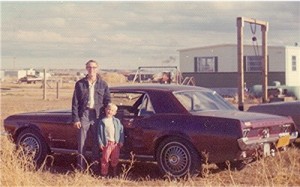 him places with us and of course, when Bob and his dad, Walt Schulenberg were working on some vehicle, Rob was there, trying to help. I don’t know how much help he really was, but since he is a great mechanic these days, I doubt if he made any serious mistakes in the early days.
him places with us and of course, when Bob and his dad, Walt Schulenberg were working on some vehicle, Rob was there, trying to help. I don’t know how much help he really was, but since he is a great mechanic these days, I doubt if he made any serious mistakes in the early days.
Because I seemed so much taller than Ron in those early years, he kept telling me he was going to get taller one day. Well, that was a given, because I am only 5 feet 2 inches. Still, at seven that somehow doesn’t register as being short. So, every time I saw him, he wanted to see how tall he was 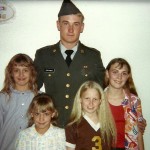
 getting. When the day finally arrived, and he found himself as tall as me, it finally occurred to him that I wasn’t as tall as he thought. The look on his face was a mixture of victory and shock. Victory, because he made it, and shock, because “it” was not where he thought he would be, when he finally made it!! It was all I could do not to laugh, but I think it would have hurt his feelings too much. Nevertheless, he knew the truth, and he never brought the subject up again. Of course, he has long since passed my short stature. Today is Ron’s birthday. Happy birthday Ron!! have a great day!! We love you!!
getting. When the day finally arrived, and he found himself as tall as me, it finally occurred to him that I wasn’t as tall as he thought. The look on his face was a mixture of victory and shock. Victory, because he made it, and shock, because “it” was not where he thought he would be, when he finally made it!! It was all I could do not to laugh, but I think it would have hurt his feelings too much. Nevertheless, he knew the truth, and he never brought the subject up again. Of course, he has long since passed my short stature. Today is Ron’s birthday. Happy birthday Ron!! have a great day!! We love you!!

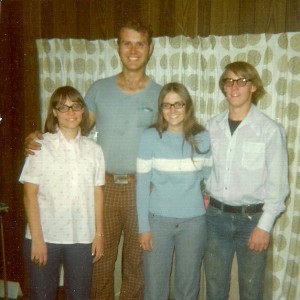 My sister-in-law, Debbie Cook first became my friend when we both worked at Kmart in the 1970s. I worked with the handbags, gloves, and wigs. Debbie worked in the Deli. I had a glove display next to the Deli, and we became friends, which led me to meet her brother, Bob Schulenberg, who became my husband 49 years ago. Wow!! Who knew what an impact that friendship would eventually have. After Debbie married her husband, LJ Cook on June 8, 1974, and Bob and I married on March 1, 1975, and we had kids (all daughters), the girls all became good friends too. They used to spend the night together, and after Debbie and LJ moved to Thermopolis, Wyoming, they would spend a week at each house during the summer. Those days are so sweet to reminisce about now. Kids grow up so fast, and the girls are all long-since married with children (and some grandchildren) of their own.
My sister-in-law, Debbie Cook first became my friend when we both worked at Kmart in the 1970s. I worked with the handbags, gloves, and wigs. Debbie worked in the Deli. I had a glove display next to the Deli, and we became friends, which led me to meet her brother, Bob Schulenberg, who became my husband 49 years ago. Wow!! Who knew what an impact that friendship would eventually have. After Debbie married her husband, LJ Cook on June 8, 1974, and Bob and I married on March 1, 1975, and we had kids (all daughters), the girls all became good friends too. They used to spend the night together, and after Debbie and LJ moved to Thermopolis, Wyoming, they would spend a week at each house during the summer. Those days are so sweet to reminisce about now. Kids grow up so fast, and the girls are all long-since married with children (and some grandchildren) of their own.

 Debbie and LJ moved to Powell, Wyoming quite a number of years ago, and now they are both retired and enjoying their free time to do whatever they choose to. They have both have some health issues in the past but in many ways, they are in the best health they have been in a long time. Their daughters, Machelle Moore and Susan Griffith both live in the Powell area too, so it’s really nice for everyone in the family. Debbie and LJ have four grandchildren, Weston Moore, Jala Satterwhite, Easton Moore, and Kaytlyn Griffith. They live in Powell too, except for Weston, who lives in Montana now.
Debbie and LJ moved to Powell, Wyoming quite a number of years ago, and now they are both retired and enjoying their free time to do whatever they choose to. They have both have some health issues in the past but in many ways, they are in the best health they have been in a long time. Their daughters, Machelle Moore and Susan Griffith both live in the Powell area too, so it’s really nice for everyone in the family. Debbie and LJ have four grandchildren, Weston Moore, Jala Satterwhite, Easton Moore, and Kaytlyn Griffith. They live in Powell too, except for Weston, who lives in Montana now.
Debbie has always liked crafting, making crossed stitch items, and more recently, quilts. I never really had a knack for that kind of thing, except the crossed stitch stuff, occasionally. Debbie has always done a lot of sewing too, making clothes for her family and such. Debbie even made her daughter, Machelle’s wedding dresses, and the other dresses for the wedding. That takes skill. They were beautiful. Debbie is a woman of 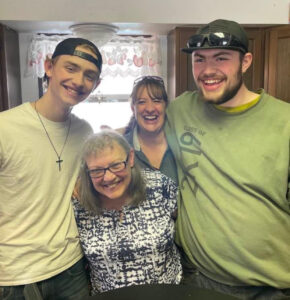
 many talents, and her family has benefitted greatly from that. She loves her family very much, and now, watching her grandchildren grow into adulthood is one of her greatest joys. The grandkids try to go see their grandchildren as much as possible, but as we all know, the older our kids and grandkids get, the busier they become. The same applies to our kids, but the girls try to get together as often as possible too. In all, Debbie has a blessed life. Today is Debbie’s birthday. Happy birthday Debbie!! Have a great day!! We love you!!
many talents, and her family has benefitted greatly from that. She loves her family very much, and now, watching her grandchildren grow into adulthood is one of her greatest joys. The grandkids try to go see their grandchildren as much as possible, but as we all know, the older our kids and grandkids get, the busier they become. The same applies to our kids, but the girls try to get together as often as possible too. In all, Debbie has a blessed life. Today is Debbie’s birthday. Happy birthday Debbie!! Have a great day!! We love you!!

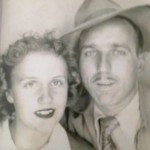 With every passing year, I find myself wondering how it could have been nine years since my mom, Collene Spencer, left us to go to Heaven. Like she lived her life, my mom went out in her own time, and in her own way…on her own terms. I’m sure that you have heard about having a bucket list. Well, my mom had her own kind of bucket list. After my dad, Allen Spencer graduated to Heaven on December 12, 2007, Mom told us that she was going to stay. I don’t know if she thought we thought she would just give up, and maybe we did to a degree, but she told us that she missed Dad very much, but she felt that she had more to give and that there was more life for her to live.
With every passing year, I find myself wondering how it could have been nine years since my mom, Collene Spencer, left us to go to Heaven. Like she lived her life, my mom went out in her own time, and in her own way…on her own terms. I’m sure that you have heard about having a bucket list. Well, my mom had her own kind of bucket list. After my dad, Allen Spencer graduated to Heaven on December 12, 2007, Mom told us that she was going to stay. I don’t know if she thought we thought she would just give up, and maybe we did to a degree, but she told us that she missed Dad very much, but she felt that she had more to give and that there was more life for her to live.
She talked about the things she wanted to do. Her bucket list was filled with simple things really. She wanted to travel to Washington to visit family up there. My Aunt Ruth and Uncle Jim were gone, but their kids, Shirley Cameron and Terry Wolfe were still there, as were their families. She wanted to see them again, so Mom, my sister, Cheryl Masterson and I went in 2013. It was a good trip, even if part of it included my Uncle Jim’s funeral. The next year, we took her to Wisconsin to she family up in the Superior, Wisconsin area. We reconnected with so many people, and had a lovely time, making lasting cousin friendships. Mom got to reconnect her brother-in-law, Bill Spencer, her sister-in-law, Doris Spencer, as well and good cousin friends, Les 
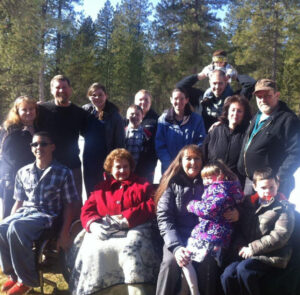 and Bev Schumacher, Carol Carlson, Bernice Hutchison, and several of their family members. Mom was so happy to see her relatives on that side of the family, who had become her close friends too.
and Bev Schumacher, Carol Carlson, Bernice Hutchison, and several of their family members. Mom was so happy to see her relatives on that side of the family, who had become her close friends too.
Mom had always said that she wouldn’t mind going to Heaven straight from church, and she almost did. On Thursday of that last week, we took Mom to dinner at Red Lobster (one of her favorite places). Then, on Sunday, we all went to church, as we always did, but this day was to be different. Mom’s sister, Evelyn Hushman was in the hospital. She had terminal Breast Cancer, and Mom wanted to get all of her remaining siblings to meet at the hospital to have lunch with Aunt Evelyn. They were all able to make it, except Aunt Dixie Richards. They all had a lovely lunch, and really enjoyed the visit. That night, Mom and my sister, Cheryl had a nice dinner and watched a movie. At 10:00pm, Mom said she was going to bed. Cheryl loaded the dishwasher and went in to take Mom her pills, but Mom would no longer be needing those pills, or any other pills. She was lying on the floor, peacefully. She had not fallen, because nothing was disturbed. She could not have laid down 
 there by herself, because her knees would never have allowed that without disturbing everything in the room. You can say what you will, but we know that the angels carefully laid our mom down there on the floor, when they took her spirit to Heaven, because Mom was ready to go. She had been talking about it for weeks, if not months. I think she might have left during church, had it not been for the chance to say goodbye to her siblings. What a blessed way for a blessing of a lady to graduate to Heaven!! We love and miss you so much, Mom. Tell Dad we love and miss him too. You are in our future now, and we will see you both again someday.
there by herself, because her knees would never have allowed that without disturbing everything in the room. You can say what you will, but we know that the angels carefully laid our mom down there on the floor, when they took her spirit to Heaven, because Mom was ready to go. She had been talking about it for weeks, if not months. I think she might have left during church, had it not been for the chance to say goodbye to her siblings. What a blessed way for a blessing of a lady to graduate to Heaven!! We love and miss you so much, Mom. Tell Dad we love and miss him too. You are in our future now, and we will see you both again someday.
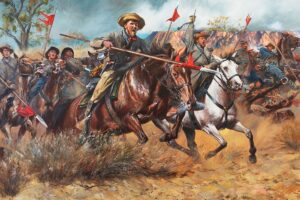
 When you think about the Civil War, you think of battles being fought back east…right? For the most part, it was. When the war began, there were 34 states, but by the end, there were 36 states. Of course, some of the Southern states, eleven to be exact, wanted to secede and form their own country. That was partly what the war was about. The Southern states wanted to keep slavery, and the Northern states did not, and because they could not agree, eleven states chose to secede, and the rest fought to keep our nation together.
When you think about the Civil War, you think of battles being fought back east…right? For the most part, it was. When the war began, there were 34 states, but by the end, there were 36 states. Of course, some of the Southern states, eleven to be exact, wanted to secede and form their own country. That was partly what the war was about. The Southern states wanted to keep slavery, and the Northern states did not, and because they could not agree, eleven states chose to secede, and the rest fought to keep our nation together.
Some of the battles were fought, however on the far western front. The first of those battles, was on February 21, 1862. In the Battle of Valverde, Confederate troops under General Henry Hopkins Sibley attacked Union troops commanded by Colonel Edward R S Canby near Fort Craig in the New Mexico Territory. This first major engagement of the Civil War in the far West, produced heavy casualties but ended with no decisive result. Of course, the battle was part of the broader movement by the Confederates to capture New Mexico and other parts of the West. The point was to secure territory that the Rebels thought was rightfully theirs, because it was part of the southern territories of the United States. This area had been denied them by political compromises made before the Civil War, which they felt was wrong. 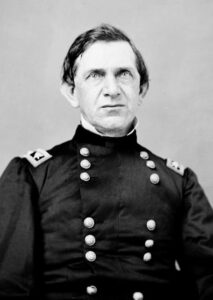
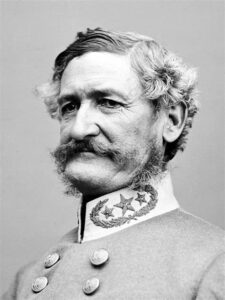
By this time, the Confederacy was quickly going broke, and they wanted to use Western mines to fill its treasury. The Rebel troops moved from San Antonio, into southern New Mexico, which at that time included Arizona, and captured the towns of Mesilla and Tucson. Sibley, with 3,000 troops, now moved north against the Federal stronghold at Fort Craig on the Rio Grande. Canby was determined to make sure the Confederates didn’t lay siege to Fort Craig. Canby knew that the Rebels were running low on supplies, and they wouldn’t last much longer. He knew that Sibley really did not have sufficiently heavy artillery to attack the fort, so when Sibley arrived near Fort Craig on February 15, he ordered his men to swing east of the fort, cross the Rio Grande, and capture the Valverde fords of the Rio Grande. He hoped to cut off Canby’s communication and force the Yankees out into the open, thereby giving the Rebels the upper hand.
For Sibley’s Rebels, things at the fords didn’t initially go as planned. Five miles north of Fort Craig, a Union detachment attacked part of the Confederate force. The Yankees pinned the Texan Rebels in a ravine and were on the verge of routing them when more of Sibley’s men arrived and turned the tide. Sibley’s second in command, Colonel Tom Green, who was filling in for Sibley, who was ill, made a bold counterattack against the Union left flank. The Yankees retreated, heading back to Fort Craig. Sibley’s men didn’t take Fort Craig either.
During the Battle of Valverde, out of 3,100 men, the Union suffered 68 killed, 160 wounded, and 35 missing. 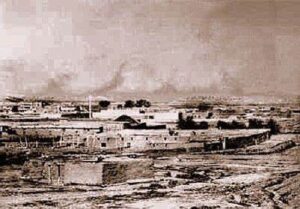
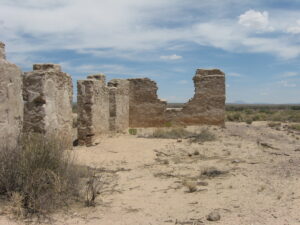 The Confederates suffered 31 killed, 154 wounded, and 1 missing out of 2,600 troops. The battle was indeed bloody, but none of their objectives were accomplished, so it was virtually an indecisive battle. From Fort Craig, Sibley’s men continued up the Rio Grande winning battle after battle. Nevertheless, after capturing Albuquerque and Santa Fe, they were stopped at the Battle of Glorieta Pass on March 28, 1862.
The Confederates suffered 31 killed, 154 wounded, and 1 missing out of 2,600 troops. The battle was indeed bloody, but none of their objectives were accomplished, so it was virtually an indecisive battle. From Fort Craig, Sibley’s men continued up the Rio Grande winning battle after battle. Nevertheless, after capturing Albuquerque and Santa Fe, they were stopped at the Battle of Glorieta Pass on March 28, 1862.
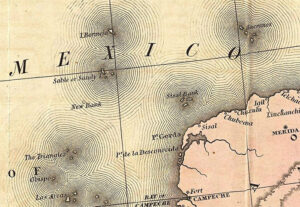
 For centuries there the maps of Mexico showed an island called Bermeja located off the north coast of the Yucatán Peninsula. It wasn’t a big island, but it was there. Then, suddenly, it wasn’t there. Now…islands don’t just disappear, so was it there, or wasn’t it, and if it was, where did it go? These days, it’s known as a phantom island. What’s interesting about this island is that a search for it found nothing that could have been called an island. While it is strange that an island was on a map and then wasn’t, I began to wonder why it mattered. There was a reason…oil rights. When a question arose concerning oil rights in the Gulf of Mexico, where the island was concerned, research started when someone pointed out that the island has no real boundaries, and therefore, no rights to oil in the Gulf of Mexico. So, authorities started looking for this piece of land, but they found only water. I’m sure that settled the question of oil rights, but it doesn’t explain whether or not the island ever existed, or if it was just an error on the old maps.
For centuries there the maps of Mexico showed an island called Bermeja located off the north coast of the Yucatán Peninsula. It wasn’t a big island, but it was there. Then, suddenly, it wasn’t there. Now…islands don’t just disappear, so was it there, or wasn’t it, and if it was, where did it go? These days, it’s known as a phantom island. What’s interesting about this island is that a search for it found nothing that could have been called an island. While it is strange that an island was on a map and then wasn’t, I began to wonder why it mattered. There was a reason…oil rights. When a question arose concerning oil rights in the Gulf of Mexico, where the island was concerned, research started when someone pointed out that the island has no real boundaries, and therefore, no rights to oil in the Gulf of Mexico. So, authorities started looking for this piece of land, but they found only water. I’m sure that settled the question of oil rights, but it doesn’t explain whether or not the island ever existed, or if it was just an error on the old maps.
Of course, no pictures of the island are known to exist. All we know is that one century, it’s sitting pretty at 22°33′ N, 91°22 E in the Gulf of Mexico and the next, it’s vanished, confounding maritime investigations and aerial surveys alike. While it may seem to many people as no big deal, the Mexican people want to know where it went. It wasn’t inhabited, so you might wonder why it is so important to know if it did and if so, where it went. The thing is that while it wouldn’t be like the island of Jamaica went missing, it still changes what the Mexican people thought they knew about their world. For some people, that is akin to having your computer have a virus, and you can’t seem to get rid of it. Ok, maybe that is extreme, but in a techy world, that would be a good comparison.
Bermeja was a common fixture on maps drawn by Spanish explorers back in the 16th and 17th centuries. Strangely, its location sometimes varied slightly and sometimes its name appeared as Vermeja, but its existence was not in question at that time. In the 18th century, however, the island’s cartographic presence started faltering, before it eventually dropped off the horizon altogether. Its last mapped appearance dates back to the 1921 edition of the Geographic Atlas of the Mexican Republic. So, what happened to it? If you ask me it eroded away, but that is just my opinion. There are many theories regarding Bermeja’s mysterious fate. Some say that “global warming” caused the island to succumb to rising sea levels. Some wonder if an underwater earthquake caused it to denigrate. Then, there is the conspiracy theory that maybe, the CIA blow it up. They theorize that with a view to expanding US sovereignty in the oil-rich Gulf the island had to go. Others say that while that might be far-fetched, perhaps it’s not entirely impossible. I suppose that given its small size it might not have taken much to blow it up.
The Mexican and United States governments negotiated a treaty to divide Hoyos de Dona in 1997. Hoyos de Dona is a stretch of international waters taking in the area where Bermeja was once believed to be located. Now, the island mattered, so the Mexican government sent an expedition out to find it. The reason…if Bermeja did exist, it would significantly extend Mexico’s maritime limits and, more importantly, its right to the oil deposits within these limits. They found nothing, and the treaty was signed. Still, there was the authorized period of delay on oil exploration and exploitation in Hoyos de Dona, giving them a little time. That period of delay is to expire in 2010, Mexico started the hunt again. The implications for the country’s economy were just too appealing to ignore.
The “hunt” consisted of three official investigations that took place in 2009. All three used the most best technologies available at that time. They left “no wave unturned and no depth unplunged.” Nevertheless, Bermeja, nor any sign that it existed, could be found. There are those who think that it’s simply time to admit that the island never existed, and maybe it was invented by early explorers to mislead their rivals. Julio Zamora, president of the Mexican Society of Geography believes so, and says, “Countries making maps in the 16th and 17th centuries published them with inaccuracies to prevent their enemies from using them.” If ships saw an island on the map, they would avoid the area, thus allowing the map-makers free run of the area. I’m not sure why that would be important, but I suppose it’s possible, but Irasema Alcántara, from the Geography Institute at the Universidad Nacional Autónoma de México (UNAM), disagrees, saying “We’ve encountered 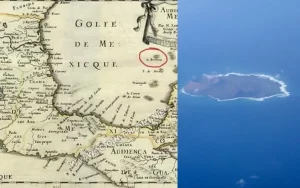
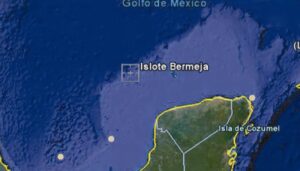 documents containing very precise descriptions of Bermeja’s existence. On this basis we firmly believe that the island did exist, but in another location.” Well, now, that puts a whole new spin on an otherwise totally confusing situation. Maybe, we should just leave well enough alone and say, “Now you see it, now you don’t.” Highly unlikely.
documents containing very precise descriptions of Bermeja’s existence. On this basis we firmly believe that the island did exist, but in another location.” Well, now, that puts a whole new spin on an otherwise totally confusing situation. Maybe, we should just leave well enough alone and say, “Now you see it, now you don’t.” Highly unlikely.
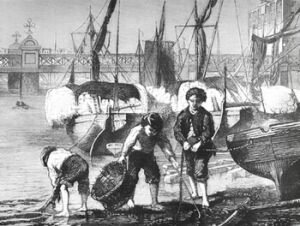
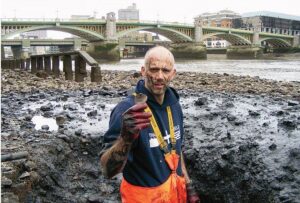 Not all age-old occupations are extinct. While we no longer need the knocker-up to make sure we are awake for work, due to the invention of the alarm clock, there will always be scavengers out there looking for lost treasure. Most of them probably don’t scavenge in the mud, but some do. It is a hobby that lots of people enjoy, but not exactly an occupation anymore. Nevertheless, there is money to be made doing it.
Not all age-old occupations are extinct. While we no longer need the knocker-up to make sure we are awake for work, due to the invention of the alarm clock, there will always be scavengers out there looking for lost treasure. Most of them probably don’t scavenge in the mud, but some do. It is a hobby that lots of people enjoy, but not exactly an occupation anymore. Nevertheless, there is money to be made doing it.
Originally, Mudlarking…or the scavenging of the river mud for items of value, was principally undertaken in London, along the river Thames. Most commonly, it was young boys from the 1700s to the early 1900s. While mudlarking would be a suitable way for young boys to make some money, the infatuation would not likely last very long. They could help their family make ends meet, it was no get rich quick endeavor. These days, mudlarking is simply a leisure activity.
In March 1904 author Dorothy Menpes wrote about London’s Mudlarks, her work published in the Batley 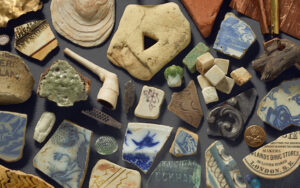 Reporter and Guardian, “Among London children are the mud-larks, the small scavengers of the Thames, generally clothed in scanty jackets, sunshine, and mud, wriggling unceasingly in and out of chains and anchors, and curling round the figureheads of the barges, never for one moment still, slippery and elusive as eels. They are very mischievous sprites, these children, always appearing where you least expect them, always ferreting about with those terribly keen black eyes of theirs, and frequently swooping down like seagulls upon some hidden treasure embedded in the mud; and their chief anxiety seems to consist in evading the Thames police. The Mudlarks of the Thames were a unique community, with a ‘language of their own,'” as Menpes details, “…it is a special mud-lark patois, and appears to be a mixture of the swear-words of sailors and the slang of landsmen. There are generally fights going on among these urchins for the possession of some treasure; and their constant enemies are the bargees, whom they delight to cheat and annoy by clinging to ropes and chains, thereby getting a ride gratis, as a street boy does on a Putney bus.”
Reporter and Guardian, “Among London children are the mud-larks, the small scavengers of the Thames, generally clothed in scanty jackets, sunshine, and mud, wriggling unceasingly in and out of chains and anchors, and curling round the figureheads of the barges, never for one moment still, slippery and elusive as eels. They are very mischievous sprites, these children, always appearing where you least expect them, always ferreting about with those terribly keen black eyes of theirs, and frequently swooping down like seagulls upon some hidden treasure embedded in the mud; and their chief anxiety seems to consist in evading the Thames police. The Mudlarks of the Thames were a unique community, with a ‘language of their own,'” as Menpes details, “…it is a special mud-lark patois, and appears to be a mixture of the swear-words of sailors and the slang of landsmen. There are generally fights going on among these urchins for the possession of some treasure; and their constant enemies are the bargees, whom they delight to cheat and annoy by clinging to ropes and chains, thereby getting a ride gratis, as a street boy does on a Putney bus.”
They would have to dig around in the mud looking for their treasures, because back then, they didn’t have 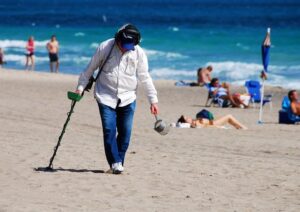
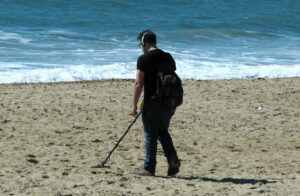 things like metal detectors. The Mudlarks (or scavengers) of today can simply walk along the beach, their yard, or the trail they are walking on to find possible treasures with very little effort. I suppose that the Mudlarks of old might say that the scavengers of today cheat to find their treasure, but as technology comes about, the game changes. It’s just the name of the game.
things like metal detectors. The Mudlarks (or scavengers) of today can simply walk along the beach, their yard, or the trail they are walking on to find possible treasures with very little effort. I suppose that the Mudlarks of old might say that the scavengers of today cheat to find their treasure, but as technology comes about, the game changes. It’s just the name of the game.

